You might recall over two years ago the proposed plans to upgrade Victoria St, including better cycle lanes, bus priority and limiting general traffic thoroughfare. The project didn’t go down too well with many locals and, even though they had another go at producing a watered-down version, ultimately led to the City Council putting a halt to proceedings until they liaised further with local stakeholders.
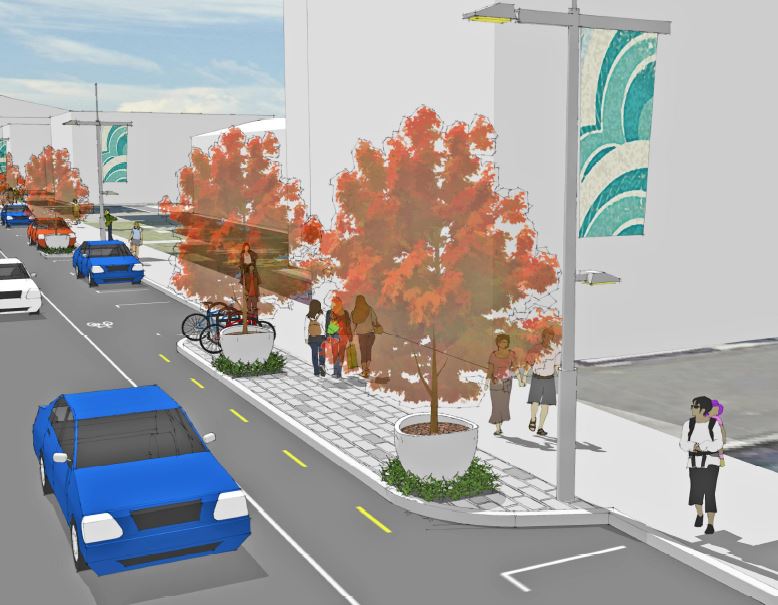
Now a revised version of the project has returned for consultation, advertised as “minor improvements” to the 2016 plan. Between what is shown on the Council website and the 2-year-old video being shown in the media, it is hard to get a clear gauge on what is actually being proposed. It appears that there will be slightly more carparks retained (about 30 fewer than at present) and some tapering of parking bay angles, but few other changes are evident.
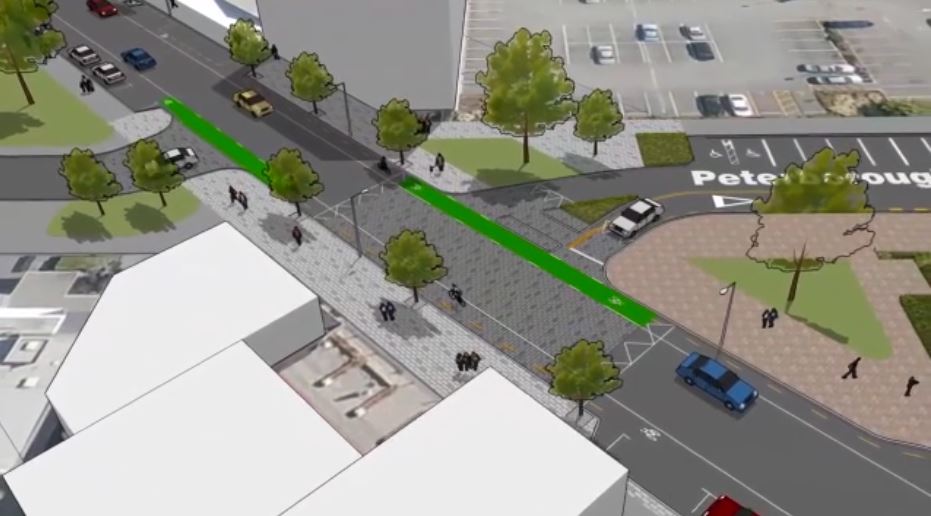
The current plan provided only provides details on the mid-block sections and deems the main intersections outside the limits of the project. Given that these were the critical elements originally, limiting the access for traffic down the entire length of the street, this seems like a case of ‘kicking for touch’ without addressing the main concerns. If the prospect of closing off some street entrances to general traffic is scary to some, I still like the idea of temporarily trialling some closures as was suggested here previously.
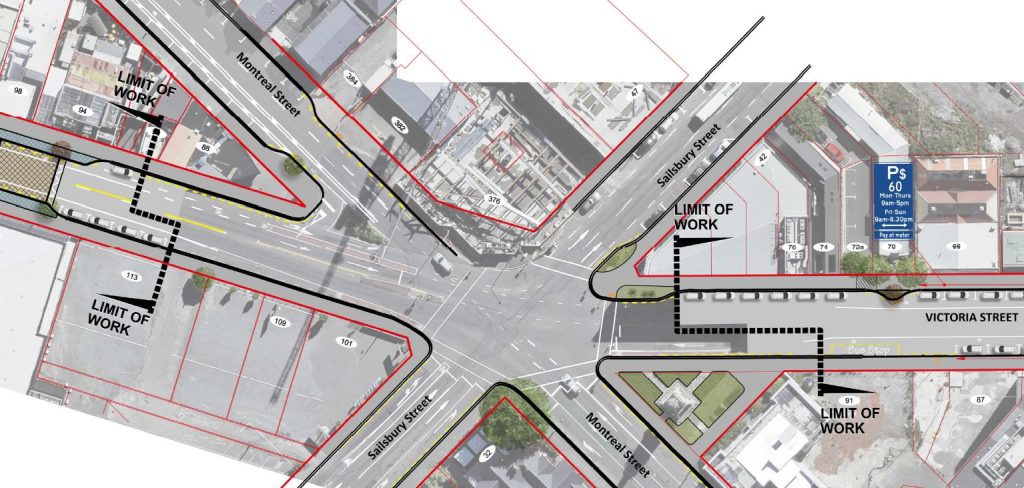
So what is proposed for cycling in the new plans? Well, not too much difference from last time, with slightly wider cycle lanes than current still proposed within the 30km/h street corridor. The main operational difference would appear to be continuing to allow general traffic to traverse the length of the street (rather than use alternatives like the one-way streets), thus making it a little less pleasant to bike along.
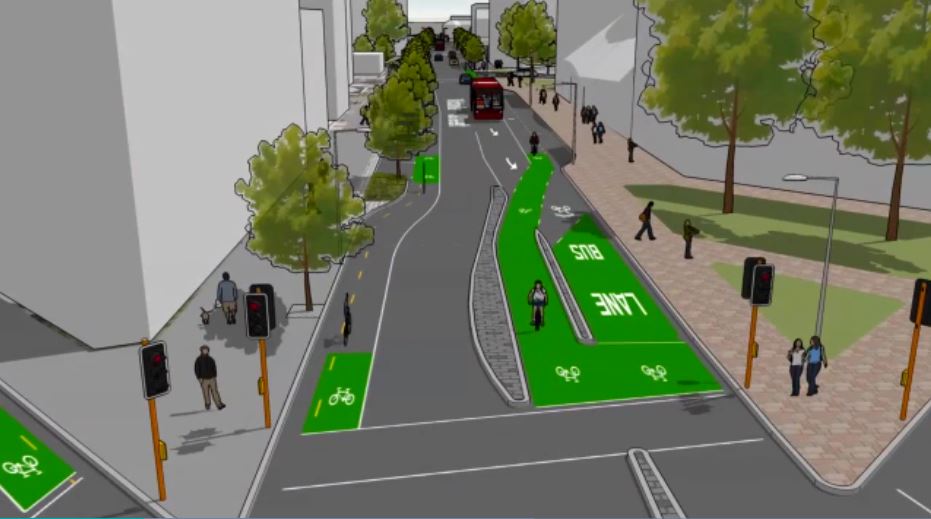
The fly-through video being bandied about seems to imply other treatments around the intersections, but it is unclear whether they are currently on the table. This includes buses and bikes only being able to exit south onto Durham St, and the use of a shared cycle and left-turn lane approaching Bealey Ave.
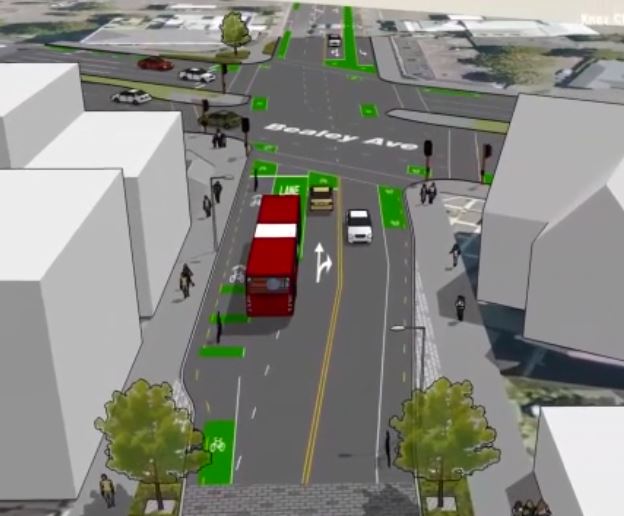
If this is all still confusing, then maybe you should have a chat with the project team at one of the drop-in sessions:
- Tue 7th May – “Sixty6 on Peterborough”, cnr Peterborough/Durham Sts between 5-7pm
- Tue 14th May – Knox Church, 28 Bealey Ave between 5-7pm
Submissions on this project are due by Mon 27th May.
What do you think of the proposed Victoria St upgrade?

A genuine question out of curiosity: with projects like this, what is the reasoning for having cycle lanes to the right of the parking spots as opposed to the left? It seems to me that the space being used would be the same, and the latter would be much safer in keeping cyclists out of the dooring zone. Throw in a few separator poles and you have a very attractive semi-segregated cycle way that connects beautifully to the city promenade. I know that segregation might not or should not be necessary on Victoria Street because it’s already 30 km/h, but I also think that semi-segregated facilities will be much better at attracting new cyclists than painted-on cycle lanes (although also happy to hear evidence to the contrary).
Placement of cycle lanes to the left of parking has been implemented in some places worldwide (e.g. Copenhagen, and also trialled in sections of Melbourne). One problem with this is that it places the bike on the passenger side of the car. Passengers have less awareness of what is happening on the road space, and also less straightforward legal responsibilities compared to the driver, if for example they open a door on a cyclist. Similarly, pedestrians are more likely to step onto the bike-lane, compared to when the bike lane is adjacent to the car traffic lanes.
If you have the road space, then these risks can be reduced by putting a traffic island between the parked cars and bike lane – similar to Tuam etc.
There can also be issues near intersections if the bike is ‘hidden’ behind a row of parked cars (easily mitigated by eliminating car parks, but that is a contentious issue)
It is an option worth considering, but it does comes with some issues to consider.
Some interesting points. Thanks. My thoughts: first, every car has a driver, but not every car has passengers. This would suggest to me that the likelihood of a passenger interaction is probably lower. Second, I would think that opening a car door without checking is a breach of my duty of care whether I am the driver or not. If not, there is something wrong with NZ tort law, but then again, the common law is not generally known for its rationality. Third, separator poles would probably also be a good visual reminder for passengers. Fourth, having a choice between colliding with a car door or a pedestrian, the pedestrian collision is less likely to be fatal. Fifth, in this specific design, there is no intersection-adjacent parking, so even a cycle path next to the sidewalk would become visible again at intersections.
I am still curious about the legal issue. It appears to me that regardless of whether opening a door is a breach of a duty of care at common law, Rule 7.2(1) of the Land Transport (Road User) Rule 2004, combined with s 167 Land Transport Act 1998 and schedule 1 of the Land Transport (Offences and Penalties) Regulations 1999 makes it an offence to open the door, regardless of whether one is a passenger or a driver. Unlike other rules, Rule 7.2(1) is not restricted to drivers. http://www.legislation.govt.nz/regulation/public/2004/0427/latest/DLM303620.html?search=sw_096be8ed817e45df_door_25_se&p=1&sr=2
Correct, the door opening rule in NZ applies to anyone in a motor vehicle. As for risk, while it is certainly more common for a solo driver to be present than multiple parties, you could argue that many drivers are reasonably well trained to check for bikes before opening their door but the same thought doesn’t necessarily occur to people when opening the kerbside door.
Providing the bike space between kerbside and parked cars will be unpalatable to the driving public and businesses alike, as the traffic lanes will need to be narrower than proposed. Access to parks will be difficult, frustratingly restricting traffic flow. There will be horror for laneside exit for occupants as car doors get flung open into moving vehicles ( rather than the perfectly acceptable close passing cyclist as currently occurs) I think the idea is great, reduced lane width will slow traffic naturally. But can the city cope with a repeat of the St Asaph Street dramas, or heaven forbid Island Bay cycleway ? Nah, Improve it as suggested , I am happy to continue to ignore Victoria Street as a destination for anything. There are better choices around.
Ironically (in the Alanis Morissette usage of the term) St Asaph St probably is one of the streets that you are more likely to frequent now, isn’t it? I for one like St Asaph very much as a ChCh newcomer who missed the drama and now just read the reward. I have spent a lot more money on St Asaph than on Victoria St.
This example illustrates the fact that switching a cycleway from one side of parking to the other is not a simple “straight swap”. With a traffic-side cycle lane, the driver-side door zone is part of the (wider) cycle lane, while the passenger-side door zone is on the footpath; faster cyclists also have the ability overtake slower ones using the adjacent traffic lane. With a kerb-side cycle lane, both door zones now need to be in the roadway corridor; you also need to make the cycle lane wide enough for riders overtaking riders. Chch separated cycleways are typically 2.0-2.2m plus door zone; good traffic-side cycle lanes are typically 1.8-2.0m including door zone.
Because I can’t reply in the “are passengers more likely to open doors than drivers” sub-thread, I thought I’d start another top-level reply to pick up some points.
I think I have read somewhere that average car occupancy in Christchurch is 1.1 passengers. It doesn’t really matter what the precise number is, this is just going to be an example. Let’s then image I ride my bike past 10 parked cars. If 0% of passengers comply with their legal obligation to check for traffic before opening the door, that would mean that if I ride past these cars to the left, I have on average one door flung open into my path of travel. If I ride past the same cars on the ride, I would have the same number of cars flung open as long as the percentage of drivers checking for bicycles is equal to or less than 90%. Now it seems to me that based on my own anecdotal evidence, gathered due to my desire to survive, the percentage of drivers checking for cyclists or at least of drivers willing to wait a few seconds after spotting a cyclist is nowhere near 90% and I would in fact be surprised if it is above 50%. But as always I’d be happy to be corrected. It just seems to me that the statement “you are less likely to have a passenger door swung into your face than a driver door” is fairly firmly supported by math.
Of course, it might still be safer to have the bike path on the ride if cyclists riding on the right could more easily mitigate the consequence of a door suddenly appearing in their path than people riding on the left of parked cars. I don’t think they can. First, a cycle lane to the right of parked cars can’t have any physical separation. Second, I measured, and our car door is 87 cms wide. My handlebar is 80 cm wide. If the cycle lane is 1.8m, that means that there 13 cm between me and any fast-moving traffic to my right, including trucks, etc. I have no protection against this fast-moving traffic (when I say fast moving, I really mean high momentum due to high mass, the speed differential isn’t that high) Thus, I must really hope that I don’t swerve, that there are no potholes, etc.
Let us then imagine a cycle lane to the left of parked cars that is also 1.8m wide, thus narrower than existing Chch separated cycle ways. First of all, there is still enough room to go around the door, but of course the same 13cm wiggle room would apply; however, and secondly, I can go further to the left on such a cycle lane, because my handlebar can overlap with the adjacent sidewalk. Thus, swerving and potholes are less of an issue. Granted, there could be borderline cases in which there are pedestrians right at the edge of the sidewalk and level with the car door, who are hit by the protruding handlebars. But I’d wager that the consequences of that are far less catastrophic than a cyclist avoiding a car door being hit by a car or truck driving to the right. Don’t misunderstand me: I would feel terrible if I accidentally hit a pedestrian with my handlebars because a passenger opened a door without looking. I just think if the borderline cases are “cyclists hit by a truck” or “pedestrian clipped by handlebar”, the former is the type of accident that should be avoided more strictly.
Now to address the overtaking: if the left-of-parking cycle lane is only semi-separated via separator poles, fast-moving cyclists can leave the cycle lane at any time to initiate an overtaking unless there are parked cars to their right. I think on the plan, the longest stretch of parking is in front of 51 Victoria Street, 10 spots. If each spot is 7 meters long, that means that at worst, one has to keep it together for 70 m (14 seconds when going 20km/h) before leaving the cycle lane to initiate an overtaking.
I apologise for my insistence to spell the word “right” as “ride”. Apparently, soft and hard consonants at the end of words confuse me more than I thought.
I guess the moral of the story is that, regardless of which side of a parked car one is cycling along, we should endeavour to provide adequate space to mitigate the risk of car doors being opened. That is what is generally being done with all new cycleways in Christchurch.
(BTW, that average car occupancy of ~1.1 typically applies to commuter traffic; the figure is generally higher for other trips like shopping and recreation – and certainly for ferrying kids to school)
I think that is fairly uncontroversial. My question was: given the specifics of Victoria St (no endless rows of uninterrupted parking, no schools), is a roadside unseparated adjacent cycle lane (which allows close passes, particularly when cyclists have to swerve around opening doors) naturally the better option than a semi-separated kerbside cycle lane if both of them have the same width? I would still think that in this case, a kerbside, semi-separated cycle lane is an option that is a) more attractive to cyclists, b) safer, without c) having any discernible disadvantage for cars (another question might be if it might not be good to disincentivize car traffic, but that is a different question). Maybe it would be a nice idea to try out a kerbside semi-separated cycle lane of whatever width is allocated to the cycle lane currently, and use planter pots, maybe around 20 cm wide, and spaced with around 3m gaps, for the semi-separation instead of poles (also very attractive for the urban streetscape!). If it works, great. If not, moving the cycle lane roadside is simply a question of removing the planter pots and repainting the cycle lane and parking markings.